Prabhav 2020 – Healthcare Roundtable
SAMRIDH, in partnership Impact Investment Council, hosted the healthcare Roundtable at Prabhav 2020. The event saw representation from 80 plus corporates, philanthropists, grant making intuitions, impact investors, think tanks, policymakers, and service providers, as speakers at the event. In addition, the virtual event recorded 400 plus delegate registrations.
The 90 minutes session, segmented into three ‘perspectives’, began with a presentation by the session moderator, Mr. Himanshu Sikka, setting the context for the Roundtable. He shared the current scenario in the Indian healthcare sector – outlining the challenges, opportunities and key drivers to augment the healthcare systems. He particularly emphasized on the role of social entrepreneurs and multi-stakeholder partnerships to improve healthcare delivery.
PERSPECTIVE 1: India has long awaited a tech revolution in the healthcare sector: Has Covid-19 been a turning point for healthtech solutions?
Initiating the discussion on the first ‘perspective’, Ms. Pompy Sridhar highlighted MSD for Mother’s (MFM) focus on supporting partnerships, innovations and health technology to combat preventable maternal mortality. In terms of funding approach, Ms. Sridhar spoke about MFM operating with an underlying principle of creating markets or minimum viable products for it. In doing so, they begin with grants, and once they have proof of concept for a solution, they support programs with a mix of financial instruments, ranging from impact bonds, debt capital and equity capital.
One of the key points highlighted by Ms. Sridhar was on the role of philanthropic capital to strengthen government initiatives, and to support with integration of technology solutions into the national health system. Further, she spoke about digital and data being the core principles that govern MFM investments. In her concluding remarks Ms. Sridhar highlighted that with rapid adoption of technology, the challenge of reach in India has largely been solved. Moreover, the transaction costs have gone down, and many more businesses are now able to sustain.
Moving on to discuss the role of partnerships to augment the healthcare systems in India, Dr. Neeta Rao set the context with her views on the supply-side challenges in India to provide healthcare services. She highlighted that India has a huge demographic dividend, but it is facing a triple burden of disease – leading to a high demand for healthcare service. However, on the supply-side, there is low healthcare spending in India and poor healthcare infrastructure to address the rising needs. Further, she pointed out, despite India being a hub of innovations, it heavily relies on imports for medical devices.
Dr. Rao stressed on partnerships as the answer to bridge the gap between supply and demand of healthcare services. In her view, while the government is making significant efforts to strengthen public health systems, and different entities (development partners, corporates, financial institutions) have come forward to support government initiatives, the need of the hour is to consolidate individual resources to collectively meet the national health goals.
Speaking on the need for collaborations, Dr. Rao emphasised on USAID’s role as thought leaders and catalyst to convene stakeholders from the private sector as well as the government to form multi-stakeholder alliances. In her view, strategic level partnerships have been instrumental in addressing the ‘verticalized’ approach in the ecosystem, and has helped in mobilizing resources and solutions for a broad range of healthcare challenges in India.
Steering the discussion towards government initiatives, Mr. Varun Jhaveri was requested to share National Health Authority’s (NHA) approach on leveraging technology to achieve Universal Health Coverage goals. Mr. Jhaveri conveyed that the Government acknowledges the role and importance of technology and is adopting it extensively to deliver healthcare services. He stated that the backbone of schemes such as Ayushman Bharat is the technological ecosystem it operates in.
Further, Mr. Jhaveri acknowledged the need to catalyse private capital to augment the supply-side infrastructure of India’s healthcare systems. He talked about NHA’s partnerships to enhance technology for healthcare. In his experience, as a government entity, they bring in accountability and credibility to multi stakeholder alliances forged to address healthcare challenges in India. Mr. Jhaveri expressed the keen interest of NHA to explore more opportunities for public private partnerships that can solve the supply side issues of healthcare systems in India.
Mr. Jhaveri, highlighted that many learnings can be drawn from the evolution of the fintech ecosystem – particularly the public digital infrastructure such as the JAM trinity (Jan Dhan-Aadhaar-Mobile). He mentioned that by way of the National Digital Health Mission (NDHM), a fundamental infrastructure (similar to the JAM trinity), is now being created for the healthcare systems.
To emphasis on government’s focus on technology and innovation, Mr. Jhaveri spoke about the launch of the Market Access Program (MAP) by NHA. MAP is an initiative to support start-ups and disruptive tech solutions – which can be integrated into the hospital network of Ayushman Bharat and improve the access and quality of healthcare. NHA is working with many partners for the implementation of this initiative.
Lastly, Mr. Jhaveri stressed on the crucial role of the private sector (for technical expertise and investments), to take government initiatives to the last mile.
PERSPECTIVE 2: How has COVID-19 impacted investments in healthcare? How have the rules of the game changed?
Sharing perspectives on the investment trends in healthcare, Mr. Ranjit Menon pointed out on the limited supply chain of capital for med tech in India. Elaborating on this, he highlighted that most investments in India’s healthcare ecosystem have been towards infrastructure (building hospitals and diagnostic centres), and very little into medtech. This is mainly because not many investors understand the technological aspects of healthcare. Also, market entry and scale for med tech takes longer to initiate, given the necessary regulatory processes, clearances and clinical trials.
Shedding light on the investment trends in healthcare, Mr. Menon shared that at Chiratae their investment interests have shifted more towards software led solutions and digital platforms. Overall from industry perspective, he spoke about Artificial Inteligence (AI) emerging as a critical technology to power healthcare solutions. In his experience, AI driven solutions are also seen to get faster clearances from regulatory bodies such as FDA. In addition, home based consumer devises, that enable people to monitor their health themselves, are potential areas for private investments.
Lastly, Mr. Menon indicated long regulatory processes as a barrier for investors to enter the healthcare/medtech space. Investors, in his opinion, need to enter the market and achieve scale in a certain time period for their investments to be viable.
Echoing Mr. Menon’s views on regulatory challenges, Mr. Bhuvan Srinivasan said that start-ups have to go through the complex and often long process of regulatory clearances, and in the end the market they have to serve is small. As investors they push them to export to other countries, however, in that case they face challenges with local competitors. He further elaborated on this, by highlighting the low government spending on healthcare in India, and that India does not have strong insurance coverage. This leads to less uptake of medical devices for diseases such as diabetes, as patients have to spend out of pocket and many cannot afford that.
Mr. Bhuvan shared that India has not been able to arrive at low cost and high efficacy healthcare delivery model except for eyecare centres. In his views the innovation market is very small from a product perspective, mainly because the environment is not conducive for innovators. In his concluding remarks he also touched upon the high focus on cost efficiencies in India, and the increasing need to also emphasize on quality of services.
Charles-Antoine Janssen comments at the session largely focused on the kind of investments KOIS has been working on to improve healthcare services in India. KOIS has seen tremendous success in improving access to healthcare services by investing in high quality, low cost, low capex solutions. They have also achieved financial returns through these investments.
Mr. Janssen lauded India for its rich talent pool both in terms of quality and quantity of entrepreneurs, including quality of coders and reverse engineers. He further elaborated, that India has the science and technology to support personalised low-cost, quality care services – which when distributed to a massive volume, can generate profits and will therefore be viable investment opportunities. In his views, to strengthen the healthcare system in India there is a need for more capital and more business skills, making a case to focus on healthcare enterprises and entrepreneurs.
PERSPECTIVE 3: Healthcare Finance: How do we build customized solutions for health service providers, manufacturers and innovators
Karthikeyan T, speaking of the merits of debt capital, said that it is one of the key answers for healthcare companies to achieve scale. In terms of healthcare delivery solutions, he noted that there is reasonably good penetration of debt funding – however there is still potential for more debt capital to be accessed.
Highlighting some of the specific challenges that are inherent to healthcare models, Mr. Karthikeyan spoke about; 1) Long gestation and payback periods for healthcare delivery companies; 2) Business model constraints that limit access to working capital cycle; 3) Size/scale of the company is misconstrued by the lending community. He shared Vivriti Capital’s approach towards helping companies to diversify their pool of capital (such as equipment financing schemes), and raise working capital/supply-chain financing solutions. Finally, he stressed on the need for concerted efforts to device a different set of models to attract quality debt capital into the healthcare sector.
Mr Ashish Ahluwalia shared with the group the 4 factors on which CDC assesses the impact of their investments in healthcare. They are quality, access, workforce and stewardship. He further focussed his discussion on the need for specialised financing in healthcare, which is a combination of grants and commercial investments. In this context, he stressed on the needs for long-term capital and flexible capital.
Addressing the supply-chain aspect, raised earlier in the discussion, he emphasised on organised capital for medical education. Adding to Mr. Ahluwalia’s comments, Mr. Janssen re-iterated the need to design blended financial tools to bring together diverse entities for one unified outcome of healthcare improvement.
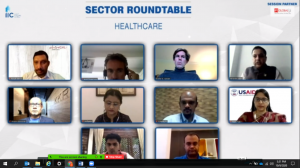
SESSION MODERATOR:
  |
Mr. Himanshu Sikka Chief Strategy & Diversification Officer and Lead – Health, Nutrition & Wash, IPE Global Ltd. |
SESSION PANELISTS:
  |
Ashish Ahluwalia Co-Head – Consumer, Healthcare, Food and Agri, CDC |
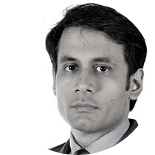  |
Bhuvan Srinivasan Director, KKR |
  |
Pompy Sridhar India Director, MSD for Mothers |
  |
Charles-Antoine Janssen Co-Founder & Managing Partner, KOIS |
  |
Jorrit Dingemans Manager Private Equity – Fund & Co-Investments, FMO – Dutch Development Bank |
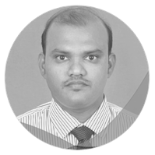  |
Karthikeyan T Deputy Vice President, Vivriti Capital |
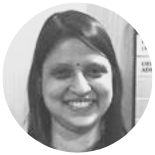  |
Dr. Neeta Rao Senior Health Specialist, USAID/India |
  |
Varun Jhaveri National Health Authority (GOI) |
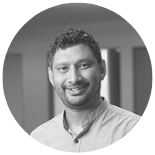  |
Ranjith Menon Executive Director, Chiratae Ventures |

